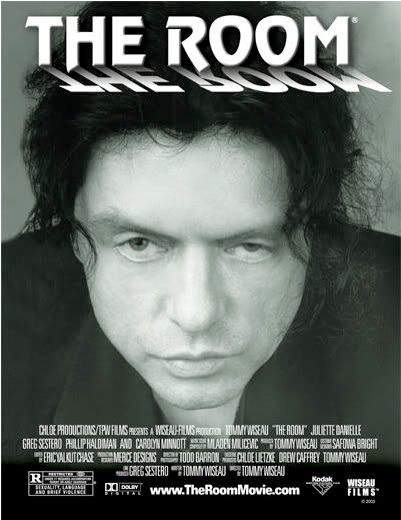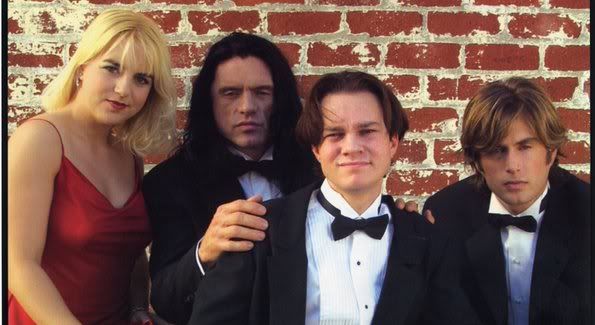Audience, Participation and Reception: THE ROOM
Posted in The Gnovis Blog
About a month ago, I attended a midnight showing of Tommy Wiseau’s The Room with fellow CCTers, Sonora Bostian and Lakshmi Padmanabhan. I had vaguely heard of its cult of devotees but really wasn’t ready for what I was about to experience. Often compared to The Rocky Horror Picture Show, The Room has developed a specific following with ritualized audience participation. Viewers dress up like the characters, throw plastic spoons at the screen during specific scenes, pass footballs to one another around the theater, and yell critique throughout. Of course I enjoyed the experience first and foremost because it was fun, but as a media studies student it was also interesting to me because as a total literalization of my own stance on the question of the active audience.
 Reception Studies, in particular, has long existed as an area of inquirty contesting the idea that audience members were simply receiving a stream of messages from the cultural production they consume, which is how it had (and has) largely been figured previously especially in terms of moving-image media. What has been argued instead is that audiences are active and engaged, participating in the making of meaning in the text, measuring the narratives against their own experience and even taking signs to mean things other than what the author may have intended.
Reception Studies, in particular, has long existed as an area of inquirty contesting the idea that audience members were simply receiving a stream of messages from the cultural production they consume, which is how it had (and has) largely been figured previously especially in terms of moving-image media. What has been argued instead is that audiences are active and engaged, participating in the making of meaning in the text, measuring the narratives against their own experience and even taking signs to mean things other than what the author may have intended.
In terms of The Room, then, it was basically all there. First and foremost, I was sitting in an audience that was very obviously active. People were constantly on the look out for the textual signals that would initiated the rituals and when they appeared, everyone went into action, lighting up the room with activity. Secondly, the jeering and screaming, though partially undertaken simply for humor, was also a kind of filmic critique, indicating the various audience members’ negotiations of the piece. One of the most popular jeers is to call out lines containing implicit sexism by adding “…because [she’s, you’re] a woman,” indicating an awareness of the prejudice and a definite active listening in terms of the dialog generally.

The other interesting thing for me was just generally how many people love this film. I mean, it is terrible. The trailer is worth watching, but it really doesn’t do it justice. Of course, in my own experieince, exampls of ironic attachments to various media abound. In media fandom, we call it anti-fandom. But evidently even this kind of engagement, with its, admittedly, odd appreciative valence has apparently escaped many old school media studies authors. This was recently hit home for me reading Horton and Wohl’s “Mass Communication and para-social interaction: Observations on intimacy at a distance” for my Cultural Politics of Television class this semester. The bottom line is, though, that people engage with and attach to media for reasons as diverse as they are.

